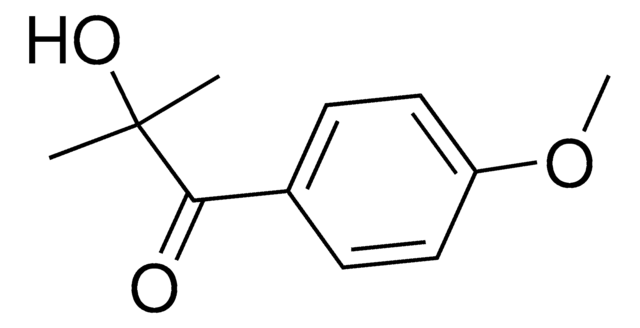900889
Lithium phenyl-2,4,6-trimethylbenzoylphosphinate
≥95%
Sinónimos:
LAP
About This Item
Productos recomendados
Quality Level
assay
≥95%
form
crystalline powder
color
white to off-white
storage temp.
2-8°C
SMILES string
CC1=C(C(P(C2=CC=CC=C2)(O[Li])=O)=O)C(C)=CC(C)=C1
¿Está buscando productos similares? Visita Guía de comparación de productos
Application
Features and Benefits
- Superior water solubility
- Biocompatible
- Sensitiveto visible light
Storage Class
11 - Combustible Solids
wgk_germany
WGK 3
flash_point_f
Not applicable
flash_point_c
Not applicable
Certificados de análisis (COA)
Busque Certificados de análisis (COA) introduciendo el número de lote del producto. Los números de lote se encuentran en la etiqueta del producto después de las palabras «Lot» o «Batch»
¿Ya tiene este producto?
Encuentre la documentación para los productos que ha comprado recientemente en la Biblioteca de documentos.
Los clientes también vieron
Artículos
Water-dispersible photoinitiator nanoparticles enable novel formulations for 3D bioprinting, tissue engineering, and device manufacturing.
Water-dispersible photoinitiator nanoparticles enable novel formulations for 3D bioprinting, tissue engineering, and device manufacturing.
Water-dispersible photoinitiator nanoparticles enable novel formulations for 3D bioprinting, tissue engineering, and device manufacturing.
Water-dispersible photoinitiator nanoparticles enable novel formulations for 3D bioprinting, tissue engineering, and device manufacturing.
Contenido relacionado
Tissue engineering fabricates tissues cultures from scaffolds, living cells, and biologically active molecules by simulating the microenvironment of the body to repair or replace damaged tissue.
Tissue engineering fabricates tissues cultures from scaffolds, living cells, and biologically active molecules by simulating the microenvironment of the body to repair or replace damaged tissue.
En la ingeniería de tejidos se fabrican cultivos de tejidos a partir de armazones, células vivas y moléculas biológicamente activas simulando el microentorno del organismo para reparar o sustituir tejido dañado.
En la ingeniería de tejidos se fabrican cultivos de tejidos a partir de armazones, células vivas y moléculas biológicamente activas simulando el microentorno del organismo para reparar o sustituir tejido dañado.
Nuestro equipo de científicos tiene experiencia en todas las áreas de investigación: Ciencias de la vida, Ciencia de los materiales, Síntesis química, Cromatografía, Analítica y muchas otras.
Póngase en contacto con el Servicio técnico










